If you want inspiration, visit an English country garden. The romantic mix of colour, abundance and formality appeals to people everywhere.
Parham House & Gardens in Sussex really is still a family garden in spite of its grandeur. I was invited to visit by Tom Brown, the head gardener, to find out what Parham has to offer the middle-sized gardener.

The Lion Gate to Parham’s four acre walled garden. Not middle-sized, but lots of inspiration lies within.
Dating back to Elizabethan times, Parham was bought by the Hon Clive Pearson in 1922. He and his wife Alicia restored the house and gardens. Although it is now a charitable trust, it is still lived in by members of the family.
Parham was one of the first gardens to open to the public. The Pearsons opened it in 1948, with Alicia Pearson saying ‘Parham has a beauty so essentially English that it is a delight to show it…’
It is an exceptionally beautiful garden, and is hardly middle-sized. But it does have lessons for us middle-sized gardeners.
Focus your gardening ideas with one word
At Parham the word ‘tapestry’ means alot in the house and garden. Inside, each floral arrangement sits on its own colour-co-ordinated tapestry mat. These were sewn by the Pearson’s daughter, Veronica Tritton. In the garden, the word ‘tapestry’ directs Tom Brown and his colleague Henry Macaulay when they’re planning new beds or filling gaps in older ones.

The Herb Garden at Parham evokes its tapestry theme.

Tapestry mats made by Veronica Tritton – each flower arrangement inside the house is placed on the appropriate mat
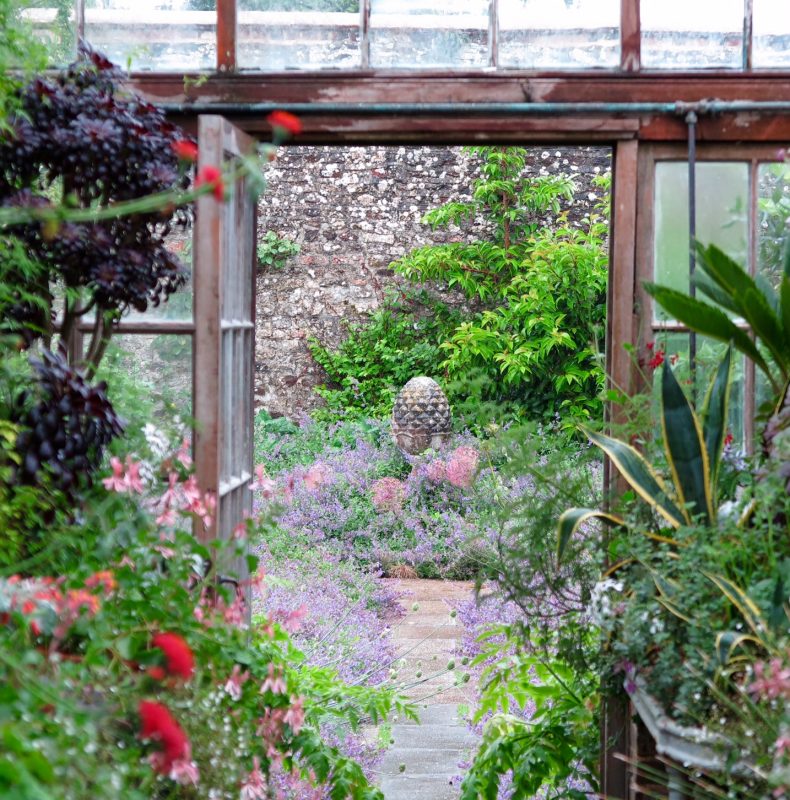
More ‘tapestry’….the greenhouse exit at Parham
You can have flowers for the house and the border
Many domestic gardeners struggle between wanting to have vases of flowers in the house, but not wanting to strip the borders of colour. There is a tradition of having wonderful flower arrangements in the house at Parham – always supplied by the garden. But it’s also a garden open to the public, so the borders have to look good too.
Tom manages this by a certain amount of rationing – the flower arrangers can have lots of cut-and-come again flowers. Special blooms, such as spikes of delphiniums, are doled out carefully.
He also slips flowers for cutting into beds everywhere – even the vegetable beds. ‘Every bed needs to supply a basketful of vegetables and a bunch of flowers for the house each week,’ he says.

Here the yellow Cosmos ‘Xanthe’ is tucked in alongside courgettes and kale, making use of every little inch of space in the veg patch.
Sometimes you just have to start again
We all have bindweed. It is comforting to know that Parham is no exception. Last winter, they made the decision to dig up the whole of the blue border and pick out every bit of bindweed root they could find. Tom and Henry then replanted the border from scratch in the spring.

This was all dug up last winter to get rid of bindweed.
Make your borders extra deep
As you can see from the above photo, Parham’s borders are extra deep. Tom says that it’s useful advice even for much smaller gardens – ‘make your borders deeper and they’ll look much better.’ (In fact, we did this a few years ago and he’s right – you’d be better off having one deep border than two shallow ones.)
Plant in drifts
Tom advises you to thread planting through borders rather than planting in rows or clumps.
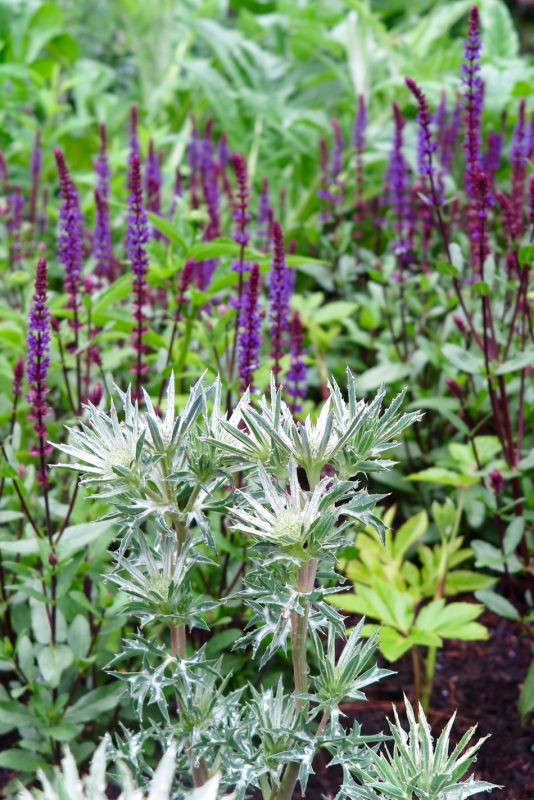
In the newly re-planted ‘blue border’, salvias are threaded through in drifts rather than planted in clumps.
Borders need to ‘speak to each other’
‘Borders need to relate to each other,’ explains Tom. You can’t plant them in isolation from each other.
I have two borders on either side of a bench. I don’t think they have exchanged two words since we moved in in 2003. I realise I need to sort this out, and restore some senses of unity. I hope I’m right in interpreting this as ‘plant similar or the same flowers in both borders or repeat patterns.’
How to settle things between you
The newly replanted blue border at Parham was created by Tom, working with Henry. ‘Because there are two of us, there’s always a struggle to arrive at a consensus,’ says Tom. They each allowed each other one ‘must-have’ plant.
I suggested that this strategy might be useful for a husband and wife trying to re-design a border. Tom said that he is often called in by friends to settle gardening disputes between couples. ‘It can be very difficult,’ he says.
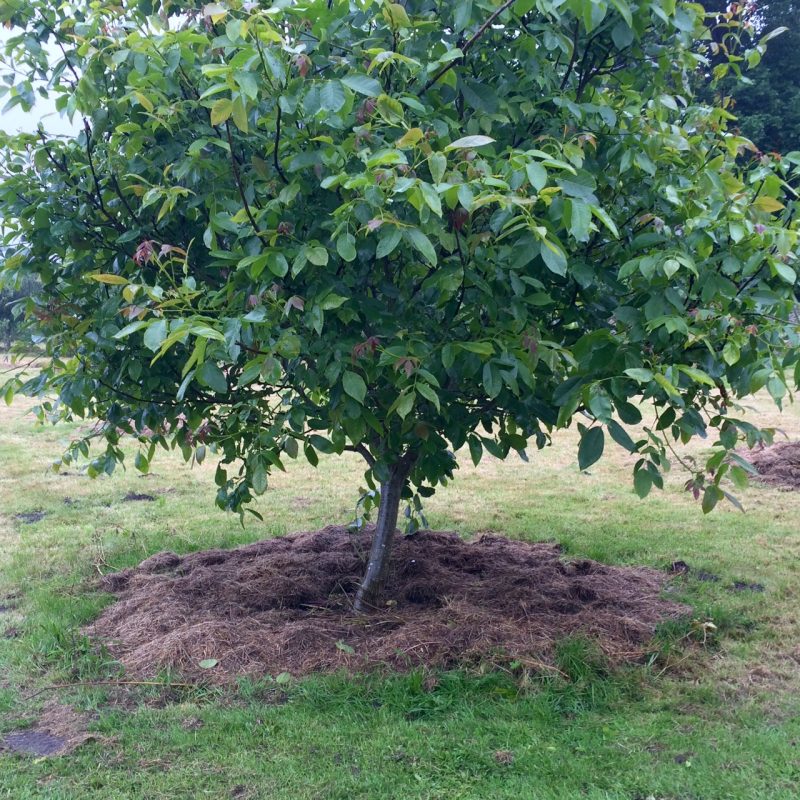
When we re-designed the middle-sized garden, Mr Middle-Size had just one stake to plant firmly in the ground. He said he didn’t want to mow round trees. So we have a rectangular lawn with no trees in it. If only we had been to Parham and seen what they do with the trees there. A ring of lawn clippings mulch around the trees in the orchard – adding nutrients and suppressing growth. No dodging under branches!
How to deal with greenhouse envy
You will want a greenhouse if you go round Parham. If you already have a greenhouse, you will want a different greenhouse.
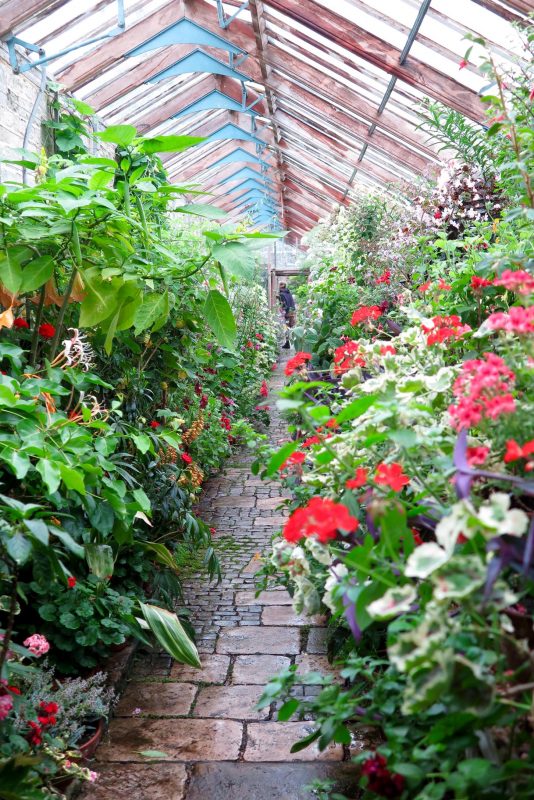
The long narrow greenhouse at Parham clings to one garden wall.
Seriously though – if you don’t have space for a traditional greenhouse, the Parham long narrow one is effectively a lean-to running along one garden wall. The style is highly practical and could easily be adapted to a middle-sized garden.
Edit, edit, edit
When Tom and Henry set out to plan the new blue border, they soon had a list of about 50 plants. ‘We then had to scale it down to around 20-30,’ says Tom. ‘It’s better to repeat plants rather than have lots of different ones.’ He suggests that a domestic (middle-sized) border might be best with only about five different plants in it.

Another wonderful tapestry-like planting in the new blue beds. Henry often says that ‘all roads in gardening lead to pink’, so they have tried to keep the lavender blues from turning out too pink. Plants, such as eryngium and thalictrum, are repeated several times all along the border.
The best time to visit an English country garden is when it’s raining
It was pouring with rain when I visited Parham. It confirmed one of my theories: that the best time to visit a garden is when it’s raining, because there’s hardly anyone else there. You can have vistas and views uncluttered by other people…
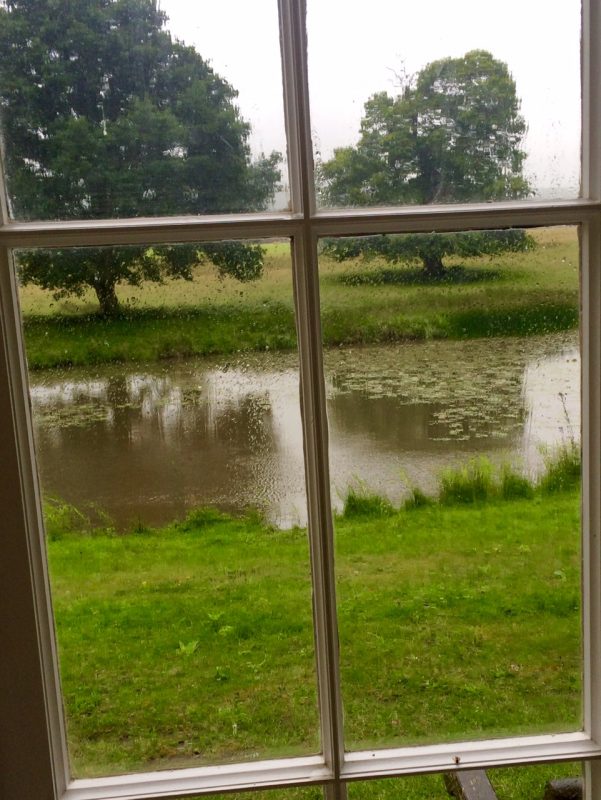
Taking shelter from the rain and watching it fall on the Pleasure Lake. The oak trees are very old.
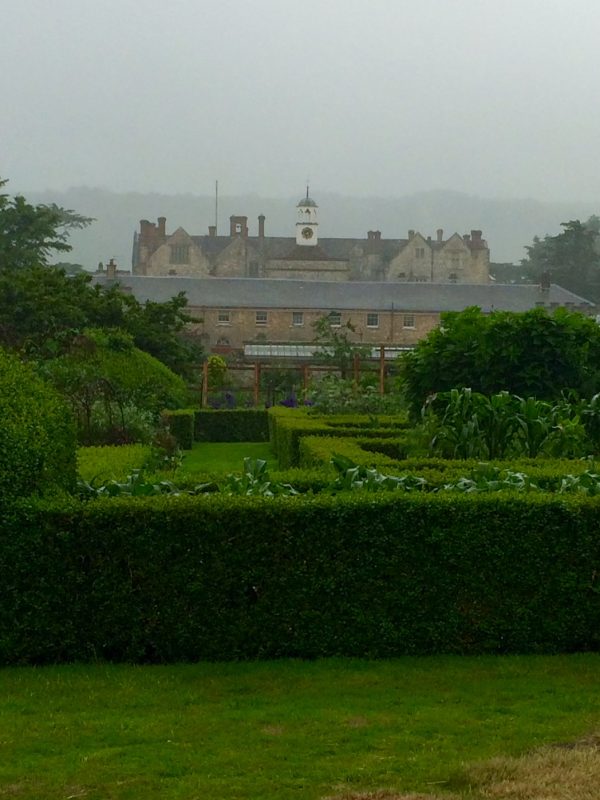
A wet day is ideal for garden visiting…Parham House & Gardens in the rain last week.
It’s the Parham Garden Weekend this weekend (9/10 July) with lots of plant stalls and special things to see. You must go, especially if it’s raining….and do please share this using the buttons below so that people who love English country gardens can put Parham on their ‘to visit’ list. Thank you!
The post 8 inspiring ideas from a stunning English country garden appeared first on The Middle-Sized Garden.
from The Middle-Sized Garden http://www.themiddlesizedgarden.co.uk/8-inspiring-ideas-stunning-english-country-garden/
No comments:
Post a Comment